
loaded:/images/placeholder.png
From imperial avenues to art halls: a self-guided journey through Kadriorg
Kadriorg – a quiet, leafy area and also one of Tallinn’s most upscale and elegant districts, is a blend of imperial history, lush green spaces and refined wooden architecture.
After Russian tsar Peter the Great conquered the Baltics in the early 1700s, he established an estate with a public park around which the neighbourhood evolved and started to blossom. Kadriorg is a home to grand museums, quiet streets lined with wooden villas and a beloved park, perfect for an escape from the city noise.
This guide combines walking directions with descriptions and historical context, allowing you to set your own pace while you learn about the urban nature, architecture and history of Kadriorg district.
Here's a teaser for what you'll see and do on your journey:
- Begin your journey from Balti Jaam and hop on a tram towards Kadriorg – Tallinn’s most graceful district.
- Experience the diverse landscape architecture, which is showcased by the various smaller gardens in Kadriorg Park.
- Visit various museums like Kadriorg Art Museum, Kumu Art Museum, and House of Peter the Great
- Take a stroll through the residential district, grab a bite to eat and enjoy local favourites.
In addition to the main route, you’ll get recommendations for more places to see and experience, if you feel like expanding your journey.
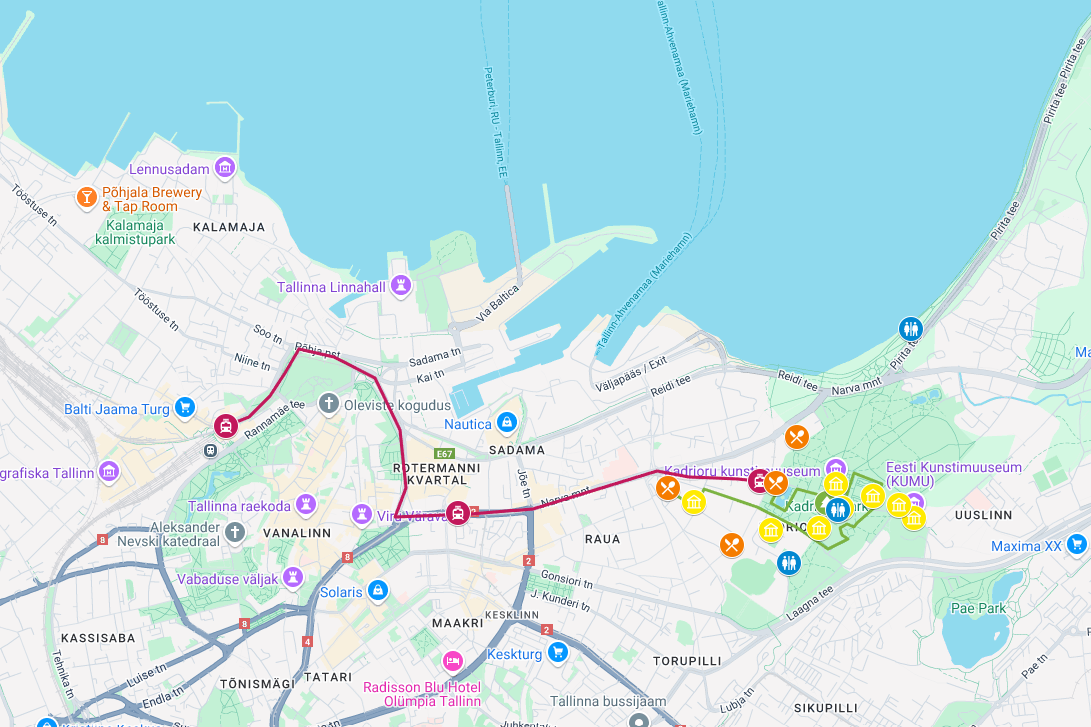
Click on the map above to open the Kadriorg routes in Google Maps.
Starting point: Balti jaam
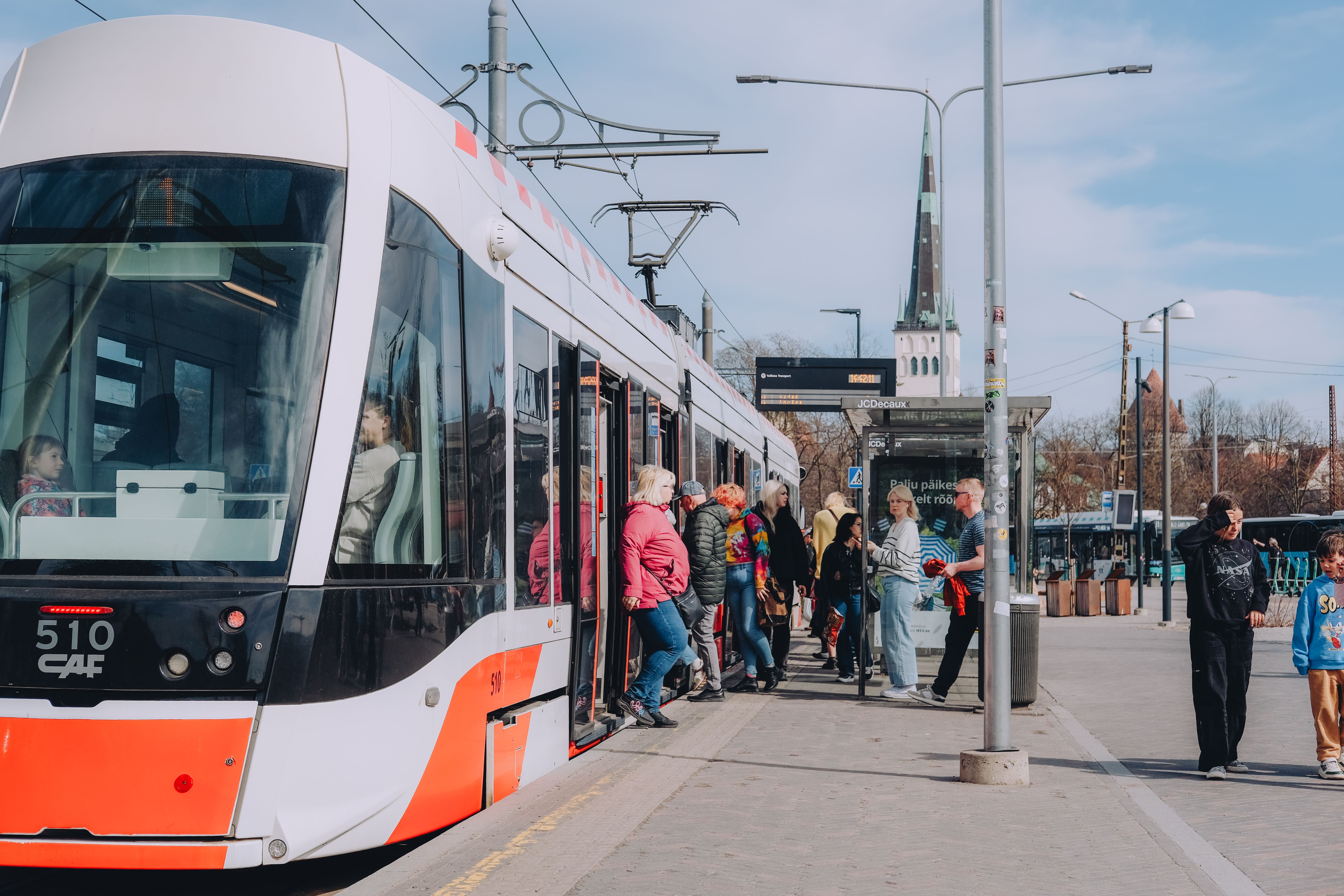
Your journey starts at the main train station in Tallinn, which the locals call Balti Jaam. Across the street lies the aptly named Balti Jaam Market and next to it, to your right when coming from the train station, is tram stop Balti Jaam. Take tram number 1 in the direction Kadriorg.
This tramline will take you straight to Kadriorg district, until the final stop also named Kadriorg, where you can set off on your self-guided walk. The journey from Balti Jaam to Kadriorg takes around 15 minutes by tram.
Alternative route: If you happen to be starting your journey from the City Centre, hop on a tram from stop Hobujaama. Take tram number 1 or 3 in the direction Kadriorg.
Transport tickets: The easiest way to travel on public transport in Tallinn is to tap your contactless payment card on the validator at the front entrance of the vehicle at the start of every ride. A single 1-hour ticket is €2, and the maximum you pay in a day is €5.50, which means no more money will be taken from your account. Read more about public transportation in Tallinn.
Arrive at Kadriorg and set off on your walk
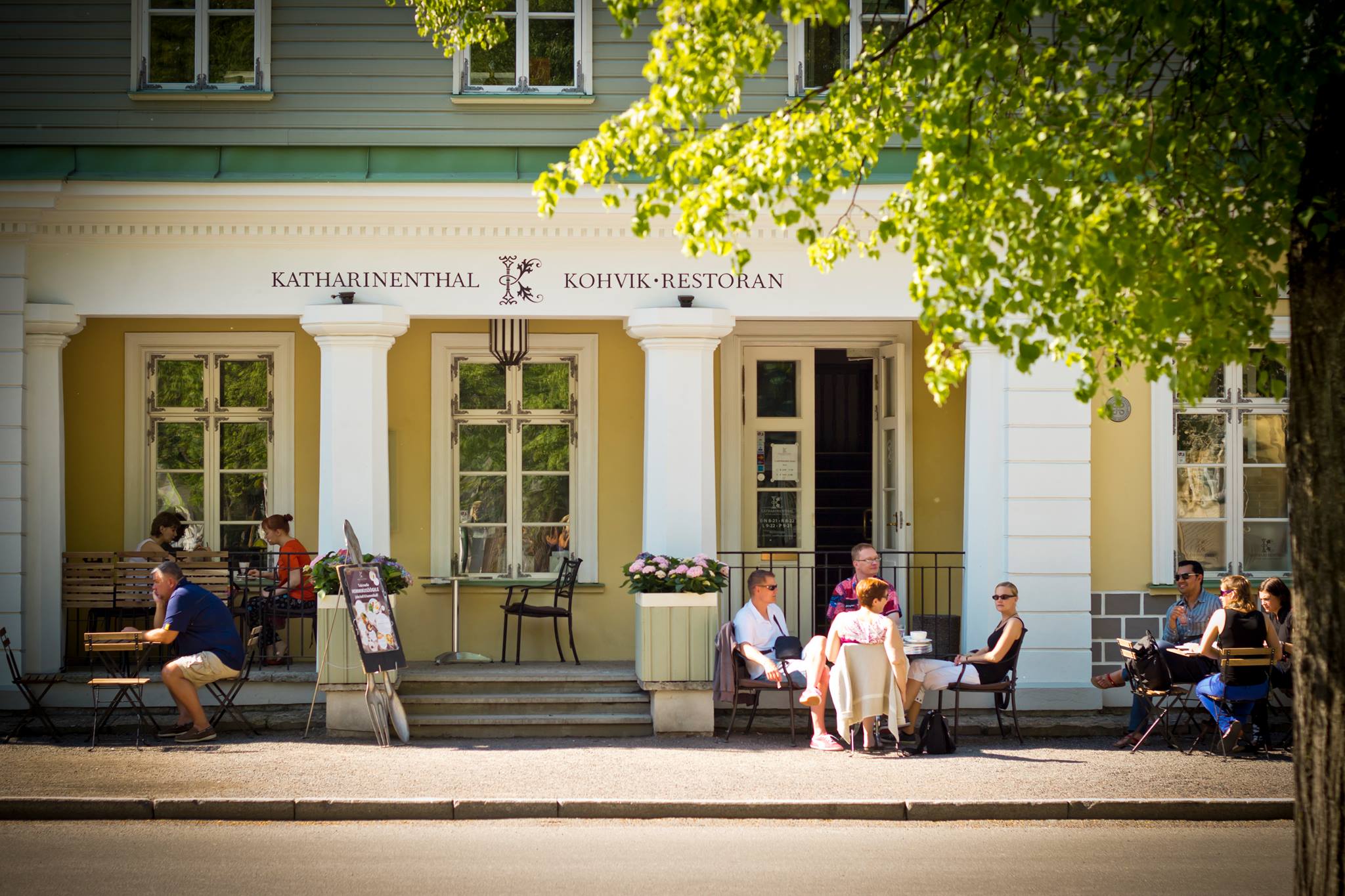
This walking journey starts right at the final tram stop at Kadriorg. As you get off the tram, head straight down the same street (Weizenbergi) towards Kadriorg Park. Right at the entrance of the named park you’ll see a yellow house with a green roof – that’s Katharinenthal Café & Bakery, where you can grab a pastry and a tasty coffee if you’d like, to bring along your journey.
Kadriorg Park is the most outstanding palatial and urban park in Estonia, covering around 70 hectares. Its construction began in 1718 on the orders of Russian tsar Peter I. Elements of park design from the 18th, 19th and 20th centuries can be seen here.
Experience the peacefulness of Kadriorg Park
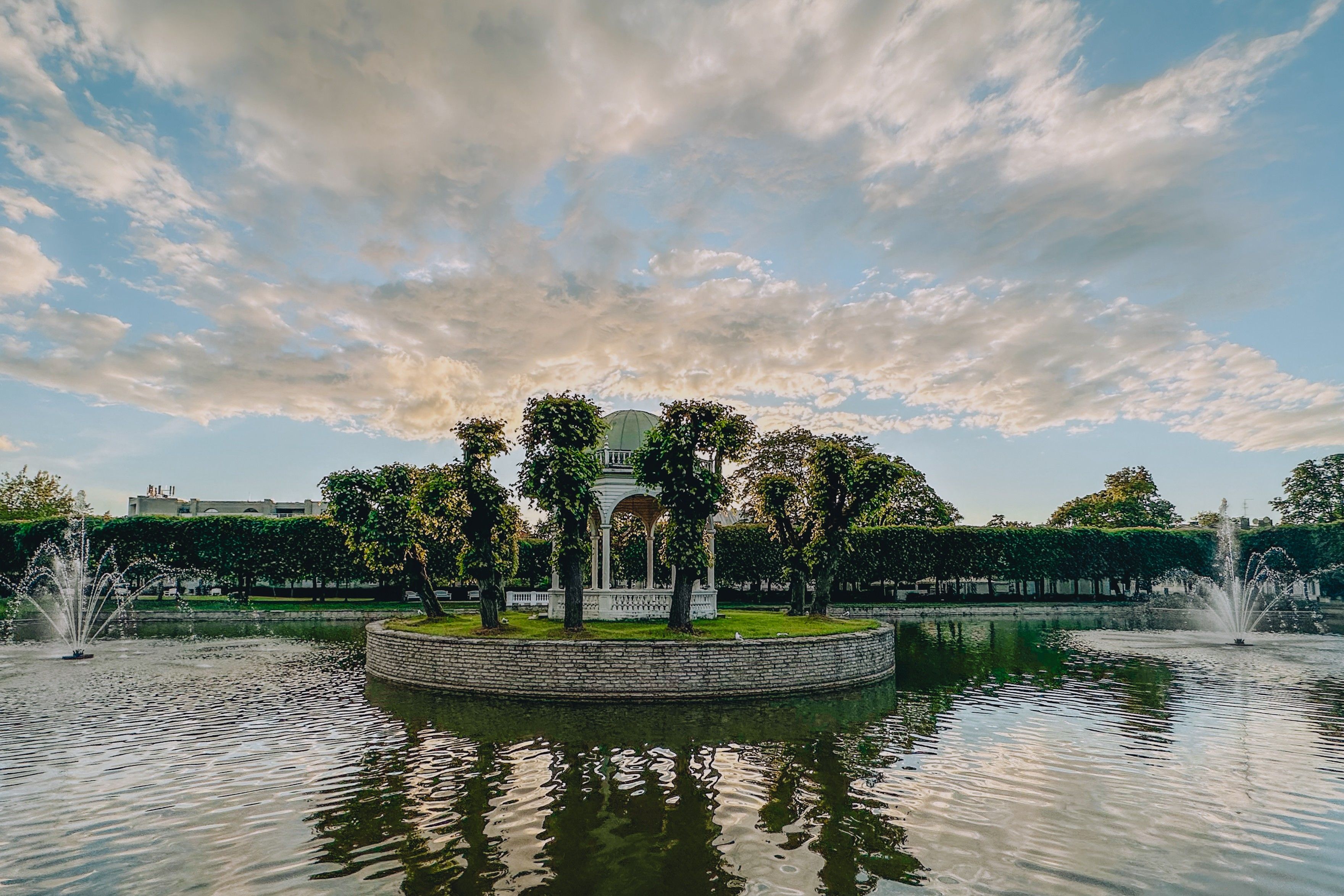
Continuing along the road, on the right you’ll be met by the Swan Pond – the heart of Kadriorg Park. Take a walk around the pond and enjoy the calm water, drifting ducks, and the occasional jogger.
Fun fact: The total length of roads passing through the park is over 16 kilometres, so when walking in Kadriorg, you can easily reach the recommended daily walking distance in addition to experiencing cultural and natural sights.
Soak up art, history and architecture
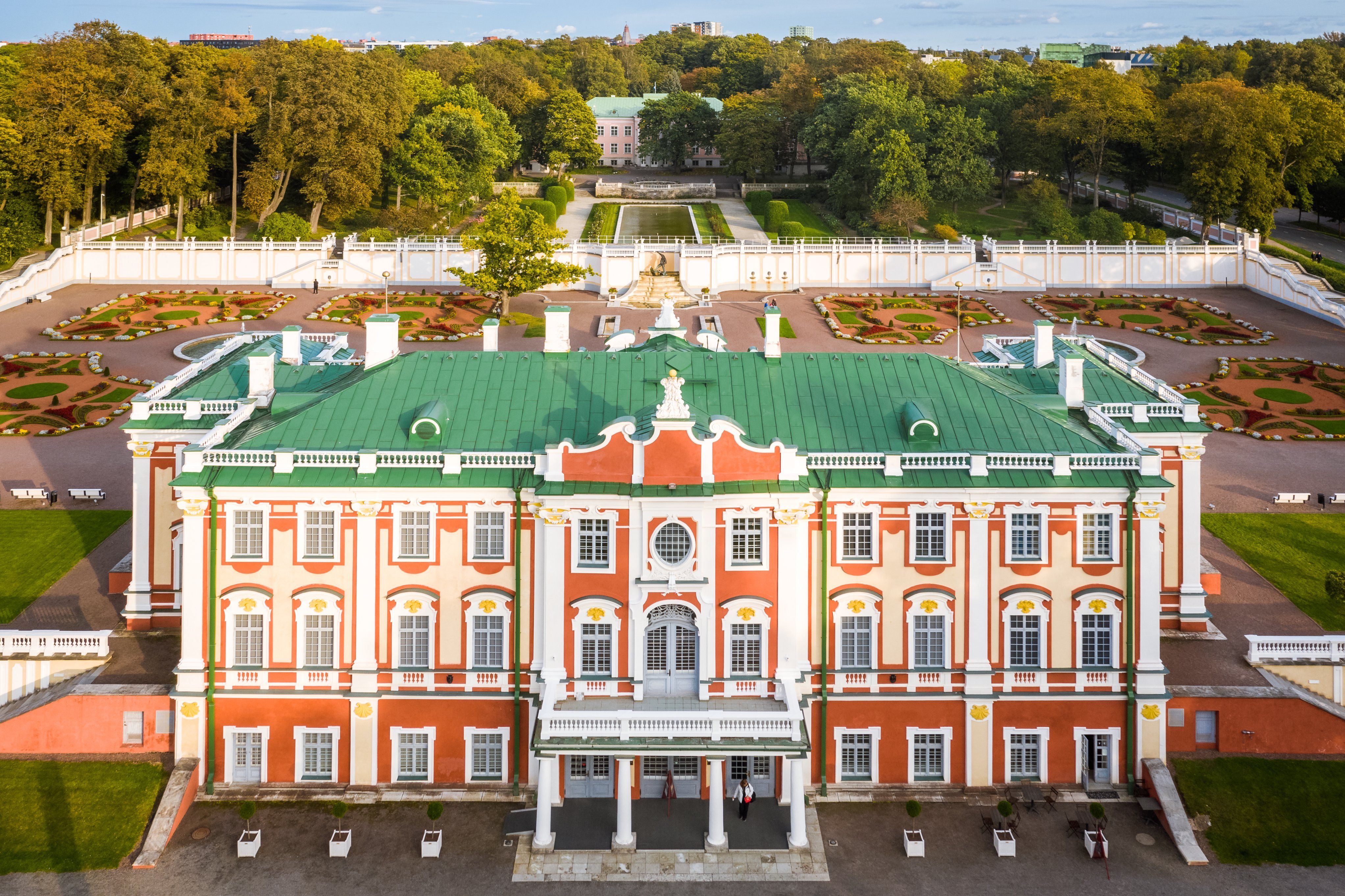
Now head back to Weizenberg Street, turn right and walk down the promenade which will take you to a pretty good bunch of museums to pick from: for foreign art, Kadriorg Art Museum (a burnt orange baroque style building to your left) tucked into Peter the Great’s summer palace, with a flower garden in front of it blooming in warm seasons. The President’s Palace stands behind a fence nearby - no entry, but worth a look.
Around it a cluster of smaller museums: the Mikkel Museum, the humble House of Peter the Great and the bold modern glass building of Kumu Art Museum, the national museum for Estonian art.
Tip for families: If you're visiting with kids, the Children’s Museum Miiamilla offers hands-on exhibits and fun for children between 2-10. There’s also a large playground tucked into the trees just nearby, perfect for a break while the little ones roam free.
Tip: If you want to enjoy a stress-free and easy access to museums, get yourself a Tallinn Card.
Take a stroll through the residential area of Estonian elite

After soaking in the culture, take a different route back. Head into the residential streets on the other side of the park - here, the city feels quieter. Wooden villas in soft colours, some restored, some charmingly weathered. This is where artists, writers, and Estonia’s elite have lived over the decades. This residential area formed over the two centuries after Russian tsar Peter the Great conquered the Baltics in the early 1700s and established an estate with a public park. He named the area Ekaterinenthal (Catherine’s Valley, or Kadriorg in Estonian) after his wife, Catherine I.
Unsurprisingly, the area also played a role in the early development of Estonia's spa culture – it was here in 1813 that a Doctor Benedikt Georg Witte established what would be the first seaside resort of the Russian Empire. Even today, having a Kadriorg address is a sign of prestige.
Reward yourself with a fantastic meal after a long journey

Now that we have been walking and experiencing for a while, it is definitely time to grab something to eat. Fortunately, Kadriorg is a home to a lot of different restaurants, cafes and eateries suitable for all different preferences. Here are some recommendations of places treasured by locals: NOP cafe – cosy atmosphere, organic and local food; Mon Repos – if you are looking for something elegant; Mantel & Korsten – Mediterranean comfort in a green wooden house; Cantina Carramba – a casual but truly „loved by locals“ gem full of colour.
Tip: If none of them sound just right, you can see more options using the map’s layer „FOOD“ and find yourself a place that really makes your heart happy.
Back home, or keep exploring?
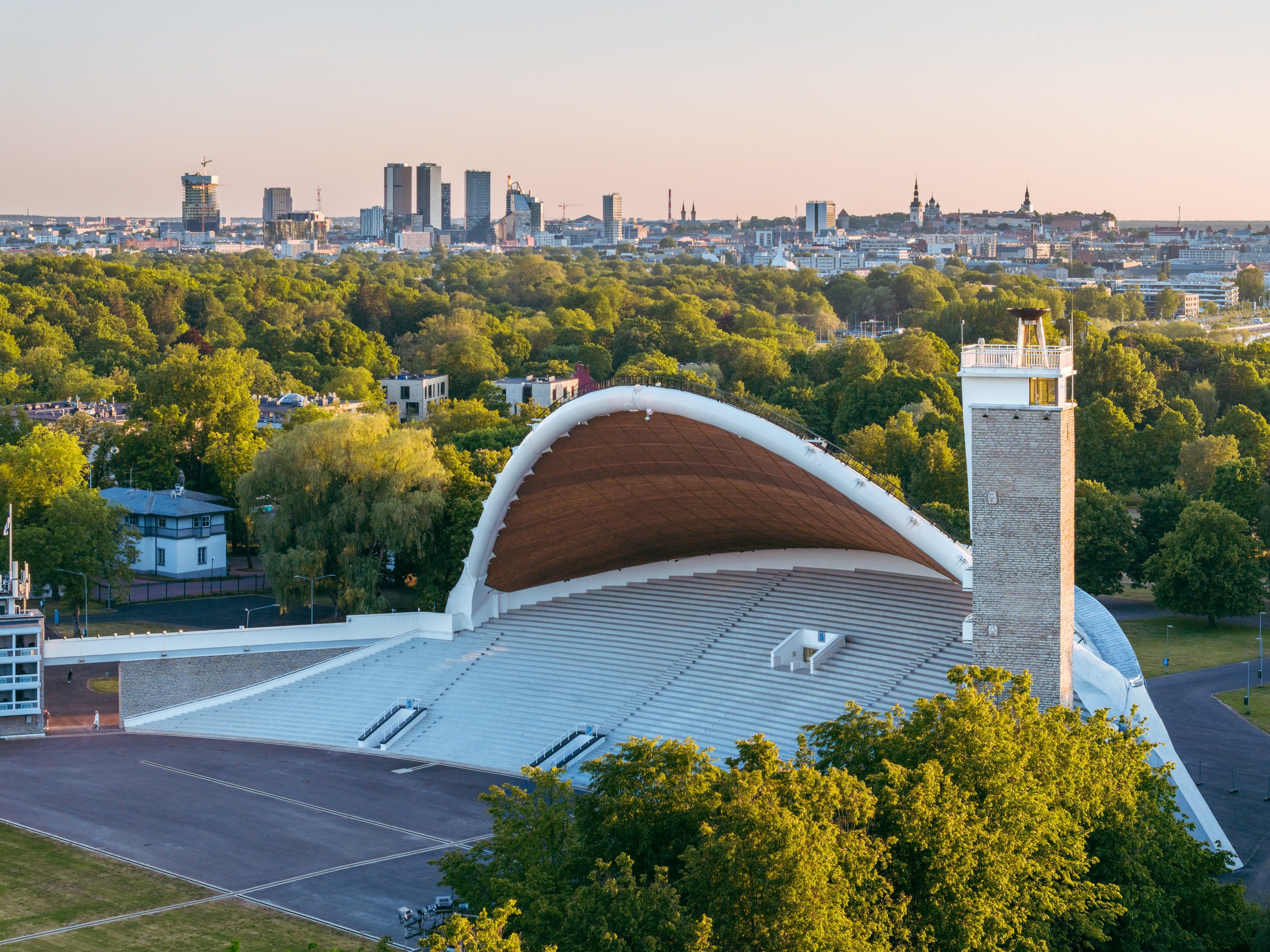
If you're not ready to head back yet, cross the park to the Japanese Garden for a peaceful pause (and see beautiful cherry blossoms if you are visiting in spring!). From there, continue to the Reidi promenade - a breezy path along the sea. Visit the Tallinn Song Festival Grounds, which is part of our history – the singing revolution to get back our freedom, took place right there. Keep going, and you’ll end up at Maarjamäe Castle, home to the Estonian History Museum and sweeping coastal views.

